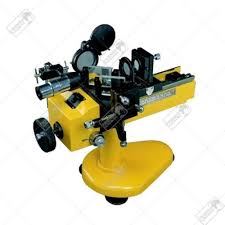Main Features
- Heavy-Duty Construction: Designed for high-precision optical experiments.
- High-Quality Optics: Ensures sharp interference fringes.
- Fine Adjustment Mechanism: For precise control of mirror movement.
- Rigid Base and Housing: Minimizes vibrations and external disturbances.
- Beam-Splitting Optics: Produces two coherent beams for interference.
- Traveling Mirror System: Allows small path length variations for measuring wavelength differences.
Working Principle
The Michelson Interferometer works on the principle of wave interference:
- Light from a monochromatic source (e.g., sodium lamp or laser) is split into two beams by a beam splitter.
- One beam reflects off a fixed mirror, while the other reflects off a movable mirror.
- The two reflected beams recombine at the beam splitter, creating an interference pattern.
- The fringe pattern shifts when the movable mirror is adjusted, allowing measurements of wavelength, refractive index changes, or surface flatness.
Applications
-
Measurement of Wavelength (λ\lambda) of Monochromatic Light
-
By moving the adjustable mirror and counting fringe shifts, the wavelength can be calculated:
λ=2dN\lambda = \frac{2d}{N}
where dd is the mirror displacement and NN is the number of fringes counted.
-
-
Refractive Index Measurement
- Used to determine the refractive index (nn) of gases or transparent materials by introducing them into one arm and observing the fringe shift.
-
Surface Flatness Testing
- Used in precision engineering to check the flatness of optical components.
-
Determination of Small Displacements
- Accurate to nanometer-level precision, making it useful in metrology and laser-based measurements.



There are no reviews yet.